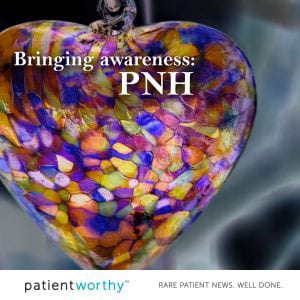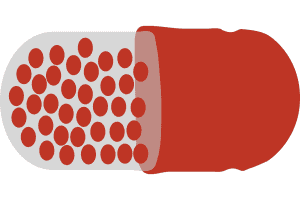Editor’s Note: We believe that patients are a key part of developing and leading the conversation in disease communities. Patient Worthy sometimes partners with reputable agencies that wish to speak with patients about opportunities related to their diagnosed conditions. These opportunities can include activities such as sharing stories with other patients or health professionals about their diagnosis journey or recording video testimonials. To learn more about how to get involved with an opportunity for paroxysmal nocturnal hemoglobinuria (PNH) patients, click here.
According to a story from AJMC, a recent study which was first published in the academic journal Annals of Hematology was able to identify possible risk factor from thromboembolic events in people living with paroxysmal nocturnal hemoglobinuria (PNH) a rare disease. Thromboembolic events (TEs) are the primary cause of death in people living with the disease. Therefore, being able to identify risk factors for TE could help doctors understand which patients are in the greatest danger and modify their care of said patients accordingly.
About The Study
The study drew on data from the International PNH Registry, and all patients in the registry through July 8, 2019 had eligibility. 57 patients that had experienced TE were involved in the research and were matched with a control group of 189 people.
The data revealed that risk factors for TE included 2 or more criteria which indicated high disease activity, a prior history of TE, a lactate dehydrogenase of 1.5 x the upper normal limit or greater, and at least 30% glycosylphosphatidylinositol (GPI)-negative granulocytes. Further research into this area will be necessary in order more clearly understand TE risk factors and the impacts that they have on patients.
About Paroxysmal Nocturnal Hemoglobinuria (PNH)
Paroxysmal nocturnal hemoglobinuria (PNH) is a rare blood disease. This life-threatening illness is most characterized by the destruction of red blood cells by a part of the innate immune system called the complement system. Paroxysmal nocturnal hemoglobinuria is an acquired disease, meaning that it is not caused by genetic abnormalities. It can appear on its own or alongside other blood diseases, such as myelodysplastic syndromes or aplastic anemia. The disease occurs because of a defect in a protein that appears on the surface of red blood cells called DAF. Symptoms of the disease include red urine (especially in the morning), palpitations, blood clots, fatigue, shortness of breath, pain when swallowing, abdominal pain, and erectile dysfunction. Blood clots are a primary cause of death for patients with paroxysmal nocturnal hemoglobinuria. This disease is best treated with either eculizumab or, more recently, ravulizumab where it is available. To learn more about paroxysmal nocturnal hemoglobinuria, click here.
Editor’s Note: We believe that patients are a key part of developing and leading the conversation in disease communities. Patient Worthy sometimes partners with reputable agencies that wish to speak with patients about opportunities related to their diagnosed conditions. These opportunities can include activities such as sharing stories with other patients or health professionals about their diagnosis journey or recording video testimonials. To learn more about how to get involved with an opportunity for paroxysmal nocturnal hemoglobinuria (PNH) patients, click here.







